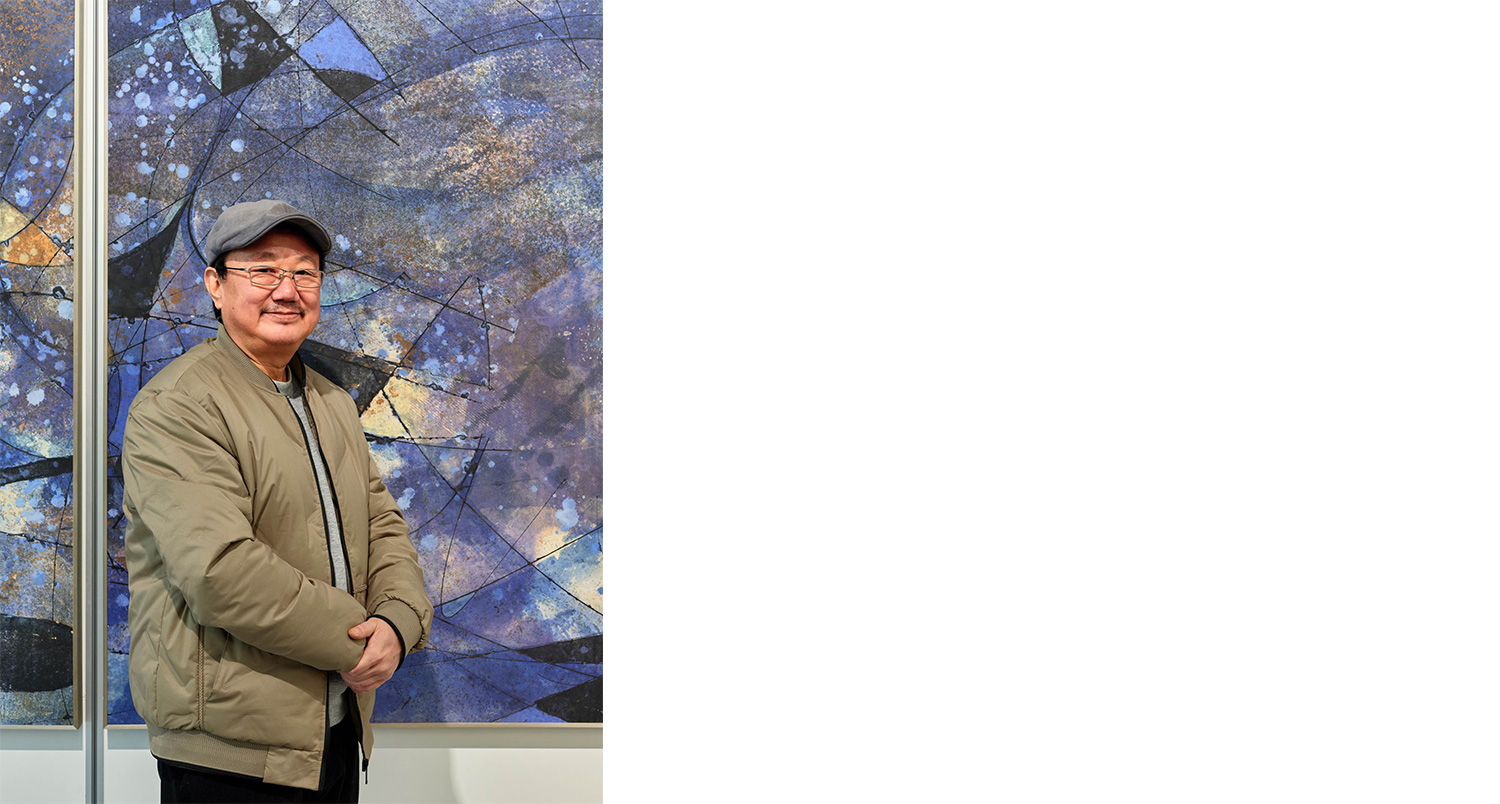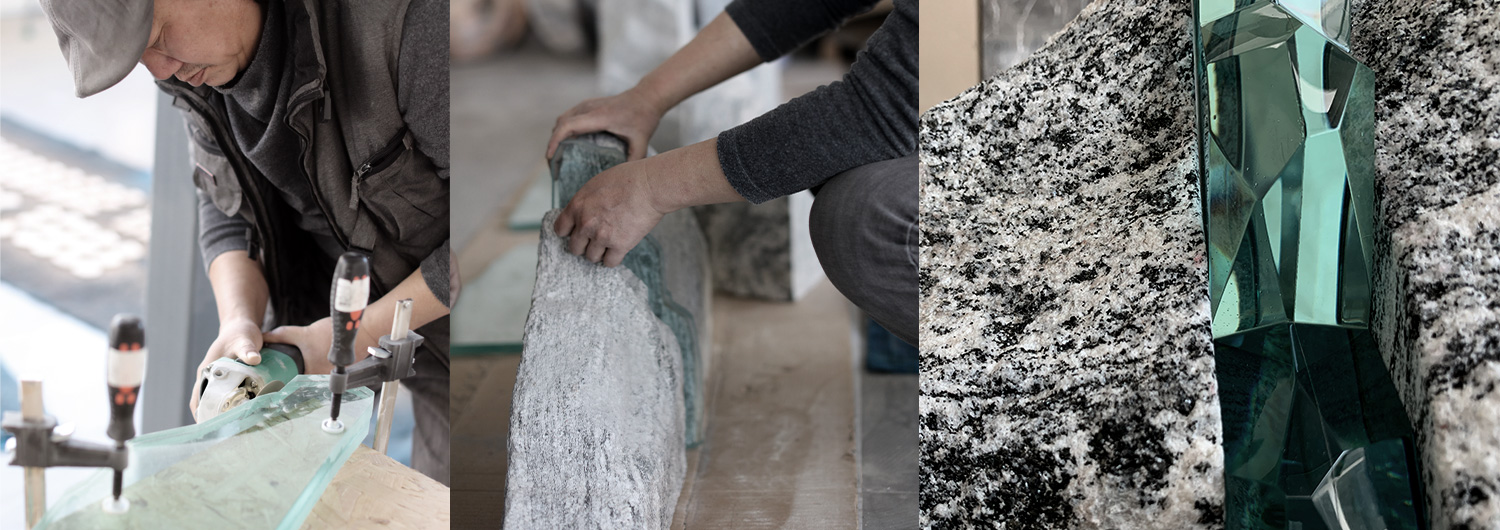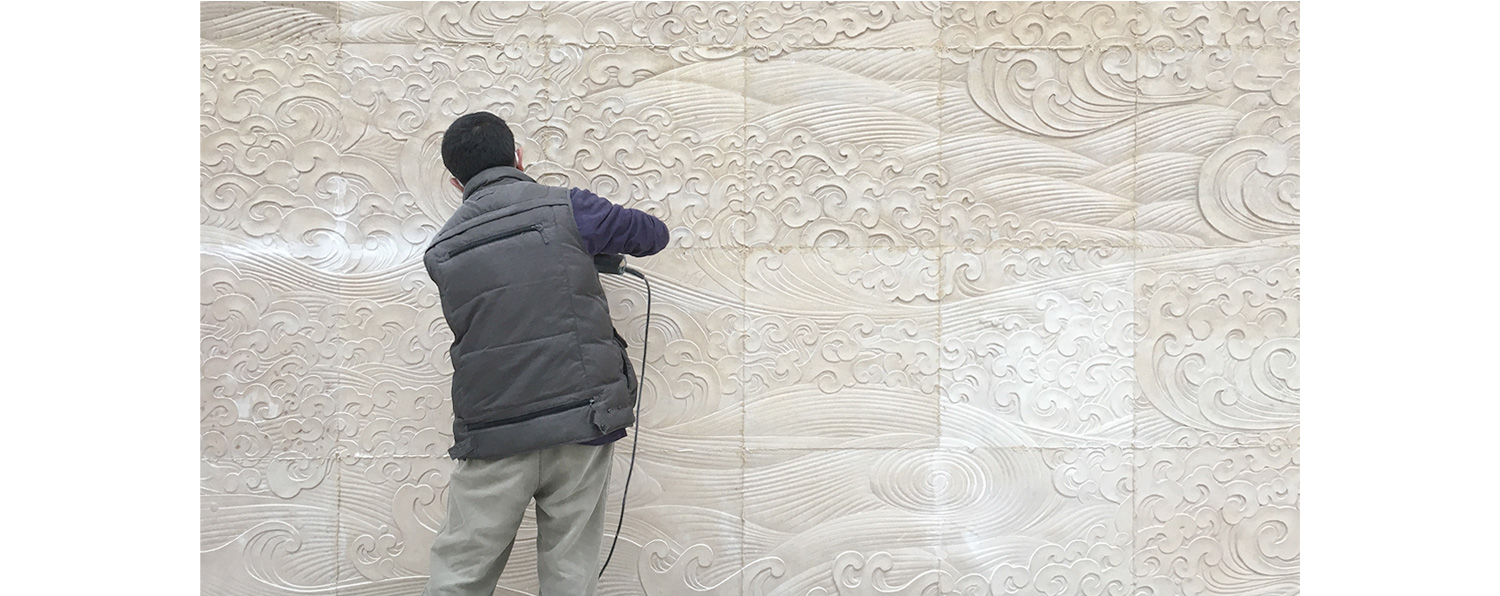ADDRESS:ZHENGYIN ART CO.,LTD, NO.65 HEDAOFU, WANGFU GARDEN, BEI7JIA TOWN,CHANGPING DISTRICT, BEIJING 102209, CHINA
PHONE:+86 135 2008 0524 (CHINESE)
+86 180 6000 1666(ENGLISH)
EMAIL:xixi@zhengyinart.com

Artist - Xiao Wei
Born in Beijing, China in 1969.
Xiao Wei, a recipient of the Asian Art Outstanding Contribution Award, is an artist with over 20 years of experience in creating spatial artworks. His artistic pursuits are diverse, ranging from paper-based drawings to sculptural installations, all of which have garnered widespread acclaim and are widely collected. Xiao Wei has achieved significant accomplishments in fields such as architectural decoration, landscape environmental art, and graphic advertising. Notable examples include the design of Bixi Fishing Garden and Daoxiang Lake Training Center. Particularly, in the design of the Chinese Fine Print Valley in Badachu Park, he skillfully integrated Chinese stone carving culture with the natural environment, creating a unique artistic landscape.
In recent years, Xiao Wei has focused on creating artworks for hotels and various public spaces. His paintings, sculptures, ceramics, and installation artworks frequently appear in world-renowned landmark buildings. His creative style is diverse, allowing him to accurately capture the cultural atmosphere of the space, and he skillfully applies different materials and techniques—a result of his decades-long exploration and experimentation with artistic forms and materials. Xiao Wei has been invited to participate in art projects for the new headquarters of China Central Television and the Chinese Embassy in France. His ceramic sculpture "Yu" was even presented as a national gift. Since 2008, Xiao Wei has completed thousands of public artworks, particularly amassing rich experience in large-scale installation art, establishing himself as a renowned artist in the field.
"The most anticipated part of creation is the process. Without the process, there is little joy in just seeing the finished product." — Xiao Wei

Art as a Form of Expression
He is always gentle, with no exaggerated gestures or expressions during conversations, much like the term he frequently mentions: moderation.
He says, "Art, to me, is just a form of expression—my most natural form of expression. Everyone expresses themselves, whether through language, actions, or other means. Dedicating one's life to artistic creation is absolutely a continuous process of expression, happening anytime and anywhere. I don't really care about the final outcome of the artwork. Today I want to express it this way, tomorrow I might want to express it differently—it's that simple. I also don't believe that art is profound, like philosophy or politics. It's a very free form of expression that can more broadly convey various contents."
A Natural Path to Art
Born into a family of artists, Xiao Wei grew up witnessing his father engage in artistic creation. He began drawing as soon as he could hold a brush, and under his father's guidance, he also explored poetry and even won his wife's heart with his excellent calligraphy. Art came so naturally to him that he confidently pursued his artistic path without formal training at an art school.

The Greatest Joy in Creation is in the Process
He says that the greatest joy in artistic creation lies in the process, where new works are constantly being produced.
In the past two decades, particularly, due to his involvement in public space art creation, he has had various opportunities to try new things. Through the process of modifying techniques, he feels that he has done many meaningful things, and this is what makes him truly proud.

Among his memories, ceramic creation has left the deepest impression on him.
He tells us that twenty years ago, when he first went to Jingdezhen, there were only about ten colors available in glaze shops. What could he do if the color he wanted wasn't available? He would mix other materials, like borax or glass, into the glaze to create the desired color. To innovate in form, he would use techniques such as cutting and carving on the existing bottle shapes. During the firing process, the pieces would often get damaged, but he found that even the damaged pieces had their own style. He continued experimenting for twenty years, and now the richness of techniques in his ceramic works far surpasses others. Many young people in Jingdezhen are now learning his methods, which brings him great joy.
He jokingly tells us that art creation is all about "messing things up." When he first arrived in Jingdezhen, the local ceramic masters thought he was just messing things up. He refused to use the ready-made techniques and always experimented with something new. While others might spend a month painting one vase, he might "mess up" 50 in a day. He believes that without doing a large number of experiments, it is impossible to achieve new results.